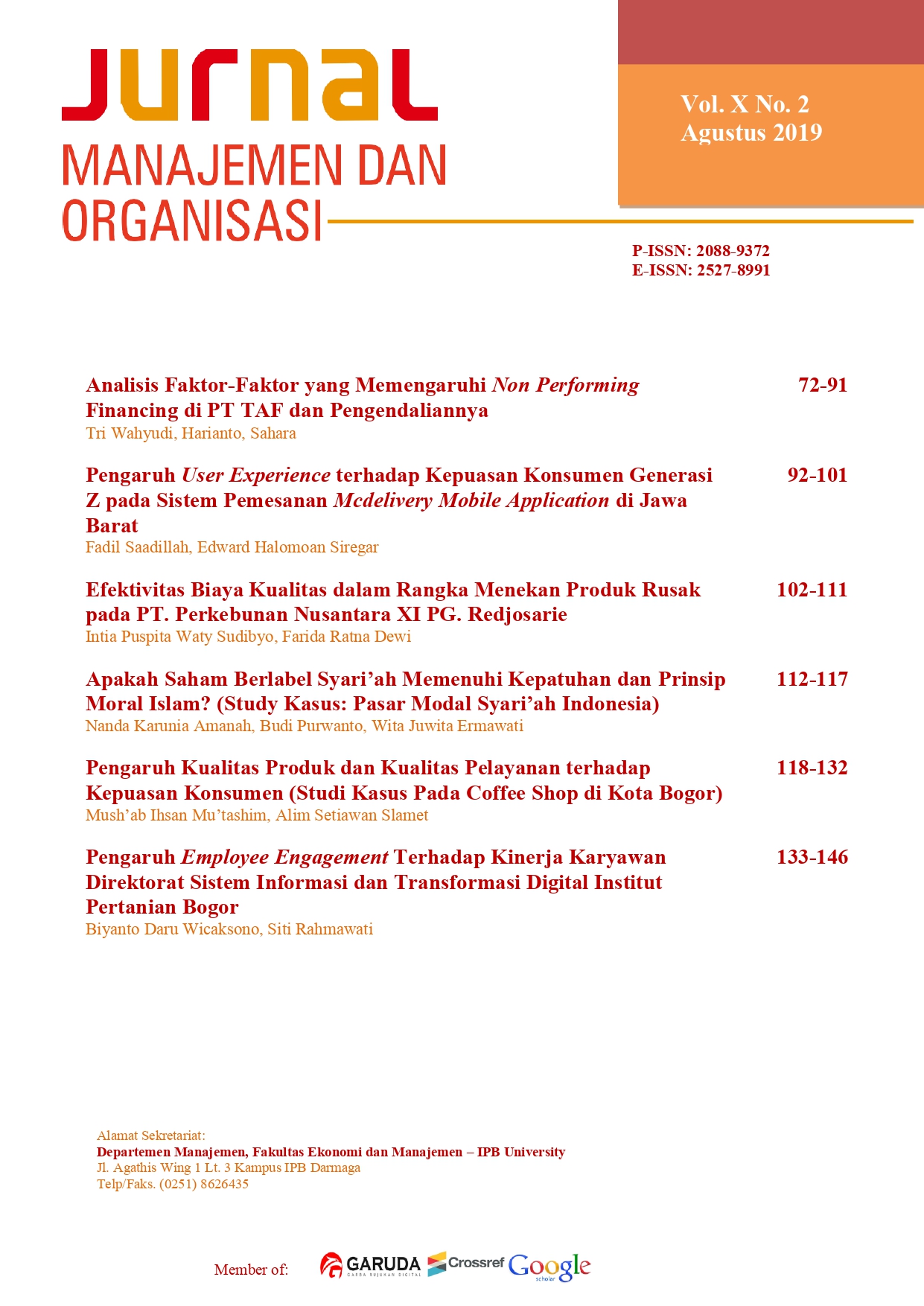Analisis Faktor-Faktor yang Memengaruhi Non Performing Financing di PT TAF dan Pengendaliannya
Abstract
PT TAF is one of multifinance companies in Indonesia. The increase in low segment sales from 2013-2017 with a high credit amount led to an increase in the quality of PT TAF's receivables categorized as Non Performing Financing (NPF). This increase in NPF was also accompanied by an increase in PT TAF's net loss in 2017 and affected the company's profits. Therefore an analysis is needed to find out factors that influence the amount of credit and NPF, in order to formulate the strategy to manage it. This study uses secondary data of PT TAF debtors which related to the amount of credit, debtor delays and NPF from 2013 to 2017. The approach of this study is a case study in PT TAF about the level of NPF from 2013 -2017. The method used in this study is descriptive analysis and statistical tests. Multiple linear regression is performed to determine the factors that influence the amount of credit, while binary logistic regression is carried out to determine the factors that influence NPF. The results of the analysis will be used to formulate a strategy proposal for controlling NPF at PT TAF. Factors that significantly influence the amount of the credit are vehicle price, age, loan interest, installment amount, income, down payment, type of first installment, type of vehicle, education, gender, credit package, and credit tenor. The factors that influence NPF are the amount of credit, Loan to Value (LTV), the residence area of the debtor and inflation. The proposed strategy formulations are: to consider factors which affecting amount of credit in granting credit, to increase the debtor portfolio with LTV less than or equal to 80 percent, avoid low down payment and long tenor products, strengthen collection organizational structures and increase team collection capabilities, and utilize the Financial Information Service System from OJK to obtain information about the debtors.


.jpg)




